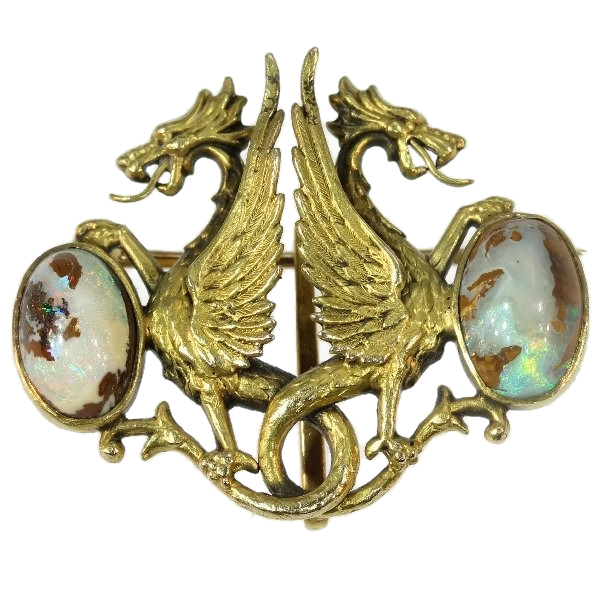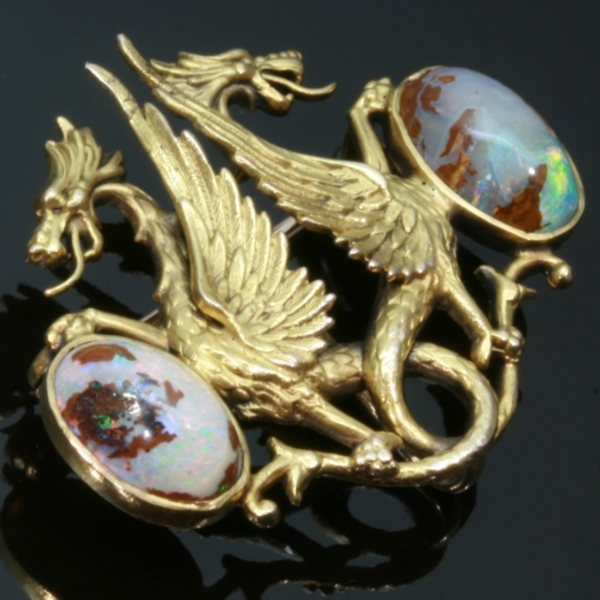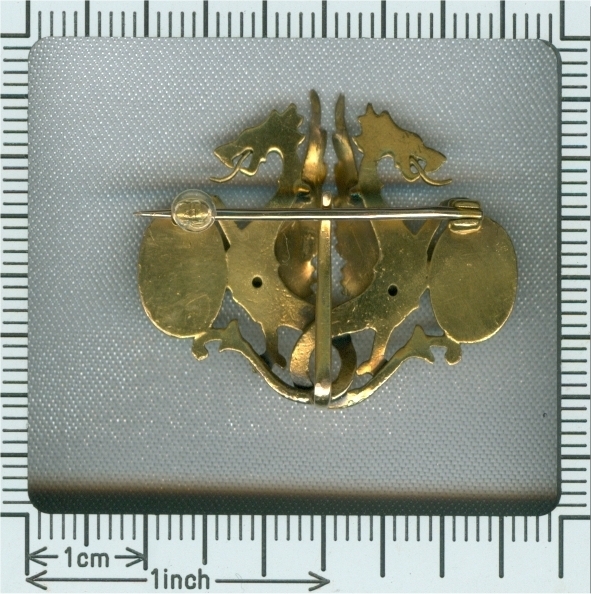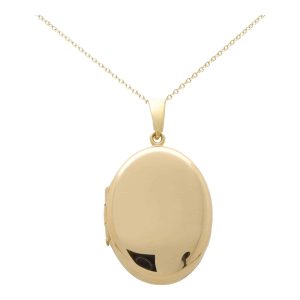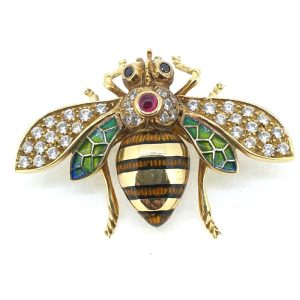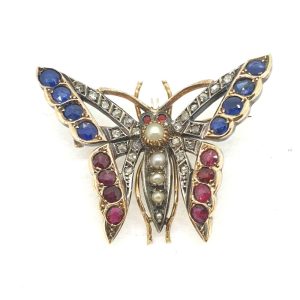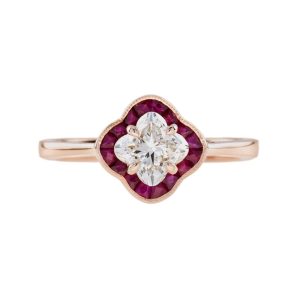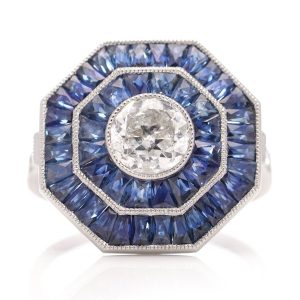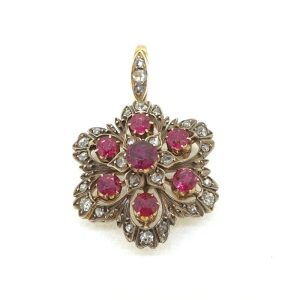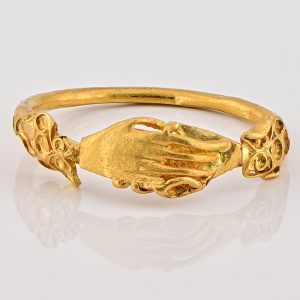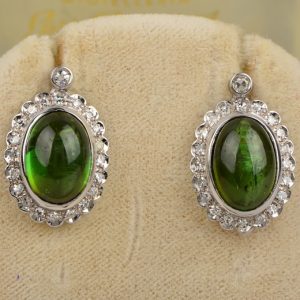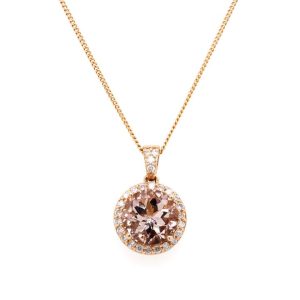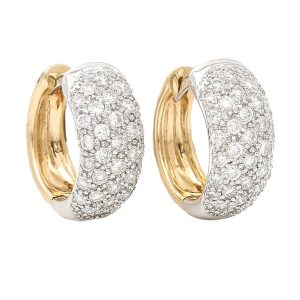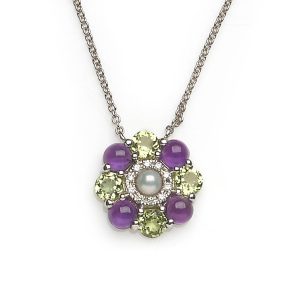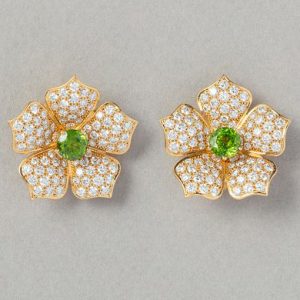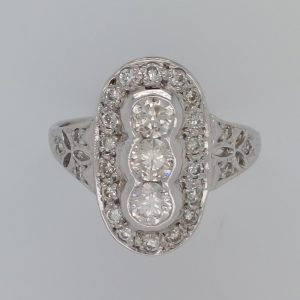Charming Antique Victorian Brooch Depicting Two Griffins Protecting Their Egg
As is typical for these fantastical creatures, two griffins take on a guarding posture with their hissing lion heads and clawed eagle hindquarters to protect the two cabochon cut opals in this 14ct yellow gold Victorian brooch from 1890. Opposing each other and yet entangled by their tails, it’s clear that these fighters will empower you during every challenge.
Antique jewellery object group: brooch
Condition: excellent condition
Country of origin: unknown
Style: Between Victorian and Art Nouveau – Victorian decorative arts refers to the style of decorative arts during the Victorian era. The Victorian era is known for its eclectic revival and interpretation of historic styles and the introduction ofcross-cultural influences from the middle east and Asia in furniture, fittings, and Interior decoration. Victorian design is widely viewed as having indulged in a regrettable excess of ornament.
The Arts and Crafts movement, the aesthetic movement, Anglo-Japanese style, and Art Nouveau style have their beginnings in the late Victorian era. Art Nouveau (French for New Style) is an international movement and style of art, architecture and applied ar Рespecially the decorative arts Рthat peaked in popularity at the turn of the 20th century (1890–1905).
The name “Art Nouveau” is French for “new art”. It is also known as ‚ÄúJugendstil‚Äù, German for “youth style”, named after the magazine Jugend, which promoted it, and in Italy, Stile Liberty from the department store in London, Liberty & Co., whichpopularised the style. A reaction to academic art of the 19th century, it is characterized by organic, especially floral and other plant-inspired motifs, as well as highly stylized, flowing curvilinear forms.
Art Nouveau is an approach to design according to which artists should work on everything from architecture to furniture, making art part of everyday life.
Style specifics: Late Victorian / early Art Nouveau – The subject of this piece, although typical 19th Century, announces the coming of the Art Nouveau style.
Period: ca. 1890
Source of inspiration: Mythology
Theme: Two griffins, back to back, each garding their egg. Griffin – The griffin, a strange and legendary creature,usually represented as being part eagle and part lion (and occasionally part serpent). As the lion was traditionally considered the king of the beasts and the eagle the king of the birds, the griffin was thought to be an especially powerful and majestic creature.
Griffins are normally known for guarding treasure. In antiquity it was a symbol of divine power and a guardian of the divine. Most contemporary illustrations give the griffin forelegs like an eagle’s legs with talons, although in some olderillustrations it has a lion’s forelimbs; it generally has a lion’s hindquarters. Its eagle’s head is conventionally given prominent ears; these are sometimes described as the lion’s ears, but are often elongated (more like a horse’s), and are sometimesfeathered. The griffin motif is found in sculpture of the ancient Babylonians, Assyrians, Persians, and Romans; in beast allegories of the early Christians; and in Gothic architecture of the late Middle Ages. The griffin remains common in heraldy,representing strength and vigilance.
Material: 14ct yellow gold
Extra information:At the back there is a big hook on which a pendant, watch or end of long chain can be attached to.
Precious stones:Two cabochon cut opals
Birthstones: Opal is the birthstone (or month stone) for October.
Hallmarks: remains of a 14ct mark
Dimensions: width 3,25 cm (1,28 inch)
Weight: 5,50 gram (5,50 dwt)
Product SKU
AD-12284-0019
£3,950
1 in stock
Charming Antique Victorian Brooch Depicting Two Griffins Protecting Their Egg
Price: £3,950 | Product SKU: AD-12284-0019
Please use the form below to enquire about this item. Alternatively you can call us directly on 020 7438 2046 or email us at Sales@jewellerydiscovery.co.uk.

